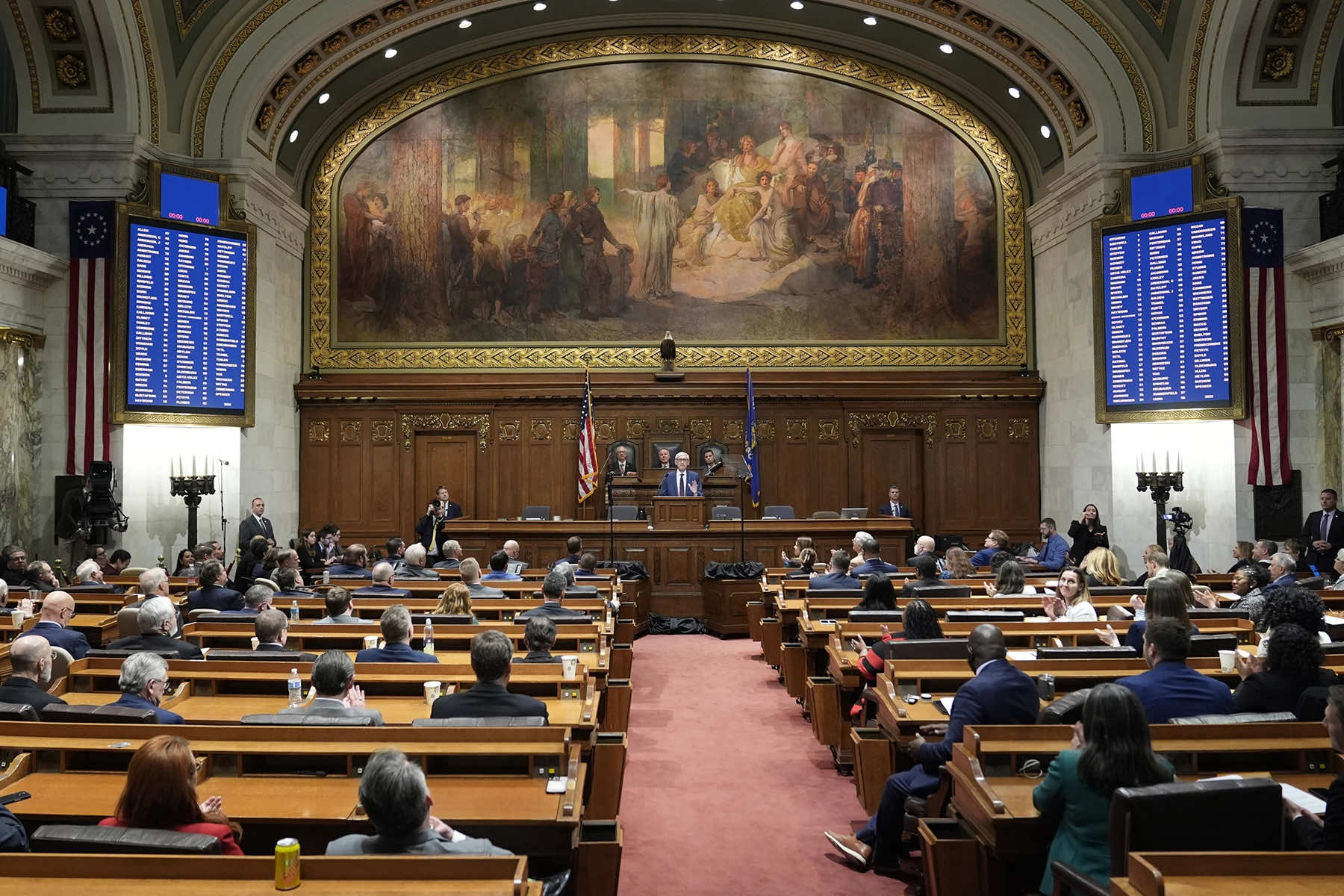
Wisconsin Governor Tony Evers signed new legislative district maps into law on February 19 that he proposed and that the Republicans, who dominate the Legislature after years of gerrymandering elections, passed to avoid having the liberal-controlled state Supreme Court draw the lines.
Democrats hailed the signing as a major political victory in the swing state where the Legislature has been firmly under Republican control for more than a decade, even as Democrats have won 14 of the past 17 statewide elections.
“When I promised I wanted fair maps — not maps that are better for one party or another, including my own — I damn well meant it,” Evers said prior to signing the maps into law at the state Capitol. “Wisconsin is not a red state or a blue state — we’re a purple state, and I believe our maps should reflect that basic fact.”
Democrats are almost certain to gain seats in the state Assembly and state Senate under the new maps, which be in place for the November election. Republicans have been operating since 2011 under maps they drew that were recognized as among the most gerrymandered in the country.
“This is a victory not for me or any political party but for our state and for the people of Wisconsin who’ve spent a decade demanding more and demanding better of us as elected officials,” Governor Evers added. “I believe, as I’ve often said, that the people should get to choose their elected officials, not the other way around. And under the maps I’m signing today, I am making good on that promise. It is a new day in Wisconsin, and today is a beautiful day for democracy.”
Democrats tried unsuccessfully for more than a decade to overturn the Republican-drawn maps. But it wasn’t until control of the state Supreme Court flipped in August after the election of liberal Justice Janet Protasiewicz that Democrats found a winning formula.
They filed a lawsuit the day after Protasiewicz joined the court. Republicans argued that Protasiewicz shouldn’t hear the lawsuit because she said during her campaign that the GOP-drawn maps were “rigged” and “unfair.” But she did not recuse herself.
Protasiewicz ended up providing the deciding fourth vote in a December ruling that declared the current maps to be unconstitutional because not all of the districts were contiguous, meaning some areas were geographically disconnected from the rest of the district. The court said it would draw the lines if the Legislature couldn’t pass maps that Evers would sign.
The court accepted maps from the governor, Democratic and Republican lawmakers, as well as three other parties to the redistricting lawsuit. Consultants hired by the court determined that maps submitted by the Legislature and a conservative law firm were “partisan gerrymanders,” leaving the court with four Democratic-drawn maps to choose from.
Facing a mid-March deadline from the state elections commission for new maps to be in place, the Legislature on February 13 passed the maps proposed by Governor Evers. Republicans described having no better option, while skeptical Democrats voted against the governor’s plans, saying they feared being tricked by Republicans.
“Wisconsin will no longer be among the most gerrymandered states in the nation,” said Assembly Democratic Leader Greta Neubauer in a statement. Neubauer, who voted against the maps, added that “this is the beginning of a new era in Wisconsin — where the will of the people will once again be the law of the land.”
Republican Assembly Speaker Robin Vos said just before the bill was passed that “it pains me to say it, but Governor Evers gets a huge win today,” and that under the new maps, “the Legislature will be up for grabs.”
Democrats also raised concerns that under the bill, the maps would not take effect immediately. That raised a legal question for any special or recall elections that take place before November, given that the state Supreme Court already ruled that the old maps are unconstitutional.
Governor Evers said that “these maps will take effect immediately after publication and will be in place for the fall elections.” He also asked the state Supreme Court to clarify that the maps will be in effect for any special elections prior to the November election.
The Governor also renewed his pledge to continue working to pass fair, independent, and nonpartisan redistricting in Wisconsin in order to guarantee that fair maps would always be the outcome when the state redistricts after each federal census.
“We’re not going to stop here. We are going to continue our fight for a fair, independent, and nonpartisan redistricting process for Wisconsin,” Governor Evers said. “If the people of Wisconsin vote to send Democratic majorities to Madison this November, I’ll tell you right now: one of the first orders of business in our first 100 days together will be enacting a fair, independent, and nonpartisan redistricting system in Wisconsin.”
Under the new maps presented by the Governor, there would be 15 incumbents in the Assembly who would be forced to run against another incumbent and six such pairings in the Senate. Only one of the Assembly pairings would pit one Democratic incumbent against another one. In the Senate, the only Democratic pairing includes an incumbent who has already decided not to run this fall.
Litigation continues in more than a dozen states over U.S. House and state legislative districts that were enacted after the 2020 census.
The Wisconsin Supreme Court also has been asked by Democrats to take up a challenge to the state’s congressional district lines. The lawsuit argues the court’s decision to order new state legislative maps opens the door to challenging the congressional map. Republicans hold six of the state’s eight congressional seats.















